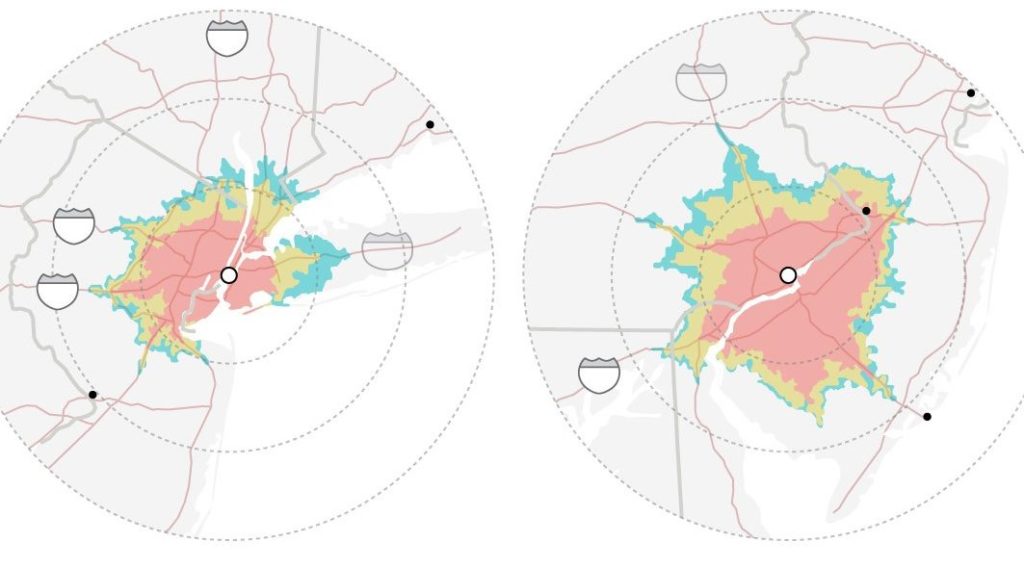What City Observatory did this week
1. Hundred dollar bills on the municipal sidewalk? There’s a lot of interest in tapping the hidden value of municipal assets to address city financial problems. The typical city owns billions of dollars of assets, particularly valuable urban land, and at least in theory, if it could earn even a modest financial return on these assets, the city could raise substantial revenue. The problem is that getting more revenue ultimately hinges on charging users, often the citizen-beneficiaries of public services, something closer to the market price for the resources or services they receive. This raises political and policy problems.
2. Why we’re talking about Portland’s freeways. Long a leader in progressive transportation policy, having torn out one freeway and cancelled several others, Portland is now considering a billion dollar package of freeway-widening projects. We explain why the debate over these projects is of more than local interest, and why we’ll be following this debate in the weeks ahead at City Observatory.
3. Driven Apart: How sprawl is lengthening American commutes. Our path-breaking 2010 report on the misleading nature of indices usually used to measure traffic congestion has been unavailable for some time. We’re republishing it at City Observatory. It shows that the widely used travel time index conceals the additional time that sprawl adds to commuting trips. It turns out that more compact cities have shorter total travel times even though they may get poor grades according to the travel time index.
Must read
1. Mapping metro travel times. The Washington Post‘s Sahil Chinoy has a superb piece of data journalism showing the peak and off peak hour travel distances in US metro areas. Using data from Here.com’s archive of cell-phone based travel data, he estimates how far you can travel in one hour by car from the city center of each of the nation’s largest metro areas at 4pm, 7pm and 10pm on a given Friday afternoon. The results are all mapped on same scale, 75-mile radius maps, so you can easily compare metro areas. The following maps shows the areas reachable in New York (left) and Philadelphia (right) within one hour at 4pm (red), 7pm (yellow) and 10 pm (green) on a typical Friday evening.
2. Private bike share flourishing in Seattle. Writing at Market Urbanism, Asher Meyers describes the initial success of two privately run bike sharing systems in Seattle, both of which use the newer “dockless” model, that relies on smart GPS equipped bikes. Limebike and Spin have each set up 1,000 bike fleets in the city, entering after the much publicized demise of the city-sponsored Pronto system. While there’s been some backlash about so-called “rogue” operators, and the illegal parking of some bikes, the entry of these privately funded systems seems likely to lead to even greater use of bikes as part of the urban transportation system.
3. America’s bus ridership is declining. The Wall Street Journal reports that over the past decade, bus ridership in the US has declined by about 10 percent. There are many causes: chief among them, cutbacks in numbers of routes and hours of service. Strapped for funds, bus operators cut back, which further reduces the utility of the system and leads to lower ridership, creating a “transit death spiral.” Service reductions have disproportionate effects on the poor and carless households, who face longer, slower journeys and less access to jobs and services.
In the News
City Observatory’s Joe Cortright is quoted in last week’s Washington Post article on highway congestion.
So what’s behind nightmarish traffic? According to Cortright, it’s about zoning and segregation. The model of the modern American city with separate sections for living, working, shopping and eating, spurs congestion.
Willamette Week synopsizes our analysis of the “safety-washing” of proposed freeway expansion projects by the Oregon Department of Transportation.
But the focus of the transportation package is on big highway projects, which aren’t a leading cause of fatal crashes. Instead, state figures show, a disproportionate number of deaths occur on secondary roads and city streets.



